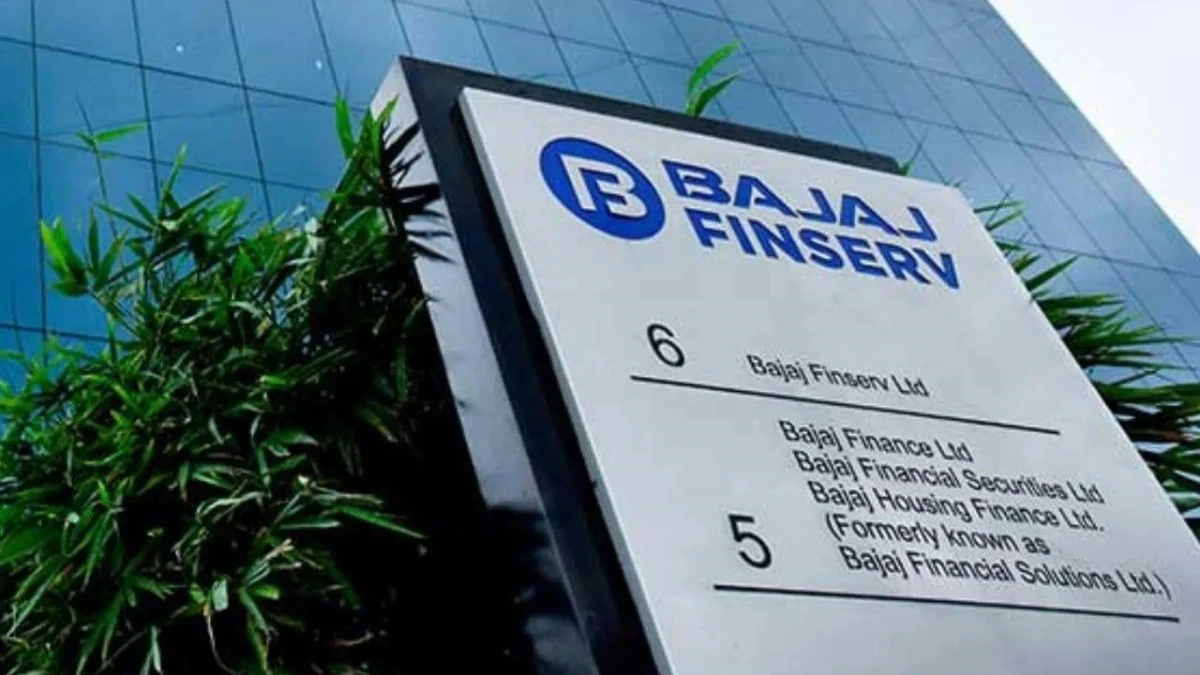RBI Refines KYC Norms To Protect The Banking Sector!
An increase in the instances of frauds has resulted in the introduction of digital KYC by the Reserve Bank of India.

In a significant direction on Know Your Customer (KYC) the Reserve Bank of India(RBI) has come out with a list of amendments, effective November 6, 2024, it has issued to implement further regulatory oversight within the financial systems, thereby fortifying its customer verification process for alignment in the modern system. These amendments have been made through a circular and thereby brought Master Directions in tune with recent amendments to the Prevention of Money Laundering (Maintenance of Records) Rules 2005 and the Unlawful Activities (Prevention) Act (UAPA) 1967.
Considering recent developments, India’s financial sector is at its most vulnerable phase. It has emerged that shadow lenders, which include Non-banking Financial Companies (NBFCs), have reported increasing instances of unsecured loan delinquencies. The twin developments bring to light the proactive approach of RBI while keeping financial stability in times of rising risk.
Digital KYC: Towards Transparency And Efficiency
One of the most important changes is digital KYC, which is essentially a process that seeks to streamline and digitize customer identification. Under this structure, the accredited representative of a regulated entity (RE) is obliged to capture a live photograph of the customer with his OVDs or proof of Aadhaar possession. Geo-tagging, which captures the latitude and longitude of the location where the photo is taken, further supports this verification process.
This makes the whole process of customer onboarding more transparent and accountable, especially in remote areas where traditional offline verification may not be very feasible. Thus, the major goal of digital KYC is to increase efficiency while minimizing fraud, money laundering, and identity theft risks.
This move, including geo-tagging in the Digital KYC process, will prove a major stride in ascertaining the authenticity of customer interactions. The same will help banks and financial institutions trace anomalies that could help ascertain proper standards for the compliance-based verification of customers.
The Six Key Amendments To KYC Norms
 The RBI has cleared many ambiguities on the subject of customer due diligence and monitoring through an amendment in the KYC Master Directions.These are as follows:
The RBI has cleared many ambiguities on the subject of customer due diligence and monitoring through an amendment in the KYC Master Directions.These are as follows:
Customer Acceptance Policy (Paragraph 10): As per the new guidelines, it has been stated that the CDD must be carried out at the UCIC level. In case a customer already exists and is being dealt with under the KYC, financial institutes will not ask for fresh documents if the customer goes for opening a new account or accessing more services.
Surveillance of High-Risk Accounts (Paragraph 37): High-risk accounts shall be kept under close surveillance. The RBI has now clarified that this is applicable to both new and existing accounts, thereby putting high-risk accounts under sharp vigilance once identified as such.
Periodic KYC Updation (Paragraph 38): The term “periodic updation” has been coined to reflect the updation of the details of the customer time to time to make the document more lucid. It helps in avoiding risks by making the customer’s records up-to-date.
CKYCR Uploads (Paragraph 56): The reporting entities will now upload or update the KYC data of individual customers and legal entities on the Central Know Your Customer Records Registry(CKYCR) platform. This is to be done either during periodic KYC updates or whenever the customer’s details change. The CKYCR will then send a notification to all reporting entities that have interacted with the customer, thus making it easy to access updated records.
 Central Nodal Officer, UAPA : The title of the Central Nodal Officer, UAPA, has been updated from “Additional Secretary” to “Joint Secretary”, aligning with current administrative designations at the time when section 51A of the UAPA is invoked.
Central Nodal Officer, UAPA : The title of the Central Nodal Officer, UAPA, has been updated from “Additional Secretary” to “Joint Secretary”, aligning with current administrative designations at the time when section 51A of the UAPA is invoked.
Uniform Terminology: All internal references to “sections” within Master Directions have been replaced with “paragraphs” for uniformity and clarity of expression.
Rising Delinquencies In The NBFC Sector
These developments only improve the regulatory framework. Challenges for India’s shadow banking sector are growing in their turn. As of March 2023, NBFCs accounted for 15% of financial system assets, with their unsecured loan portfolios reporting a rising number of NPAs. Some key players – Bajaj Finance, Shriram Finance, and Mahindra & Mahindra Financial Services reported huge increases in delinquencies in the second quarter of FY2024-25.
 For instance, gross NPA ratio at Bajaj Finance has now stood at 1.06% against the same period last year when it had stood at 0.91%. Similarly, some of the other companies reported to have increased provisions for bad debts that have affected their profitability over recent periods.
For instance, gross NPA ratio at Bajaj Finance has now stood at 1.06% against the same period last year when it had stood at 0.91%. Similarly, some of the other companies reported to have increased provisions for bad debts that have affected their profitability over recent periods.
Many of these NBFCs have reported this kind of increase attributed to over-leveraged customers who cannot further repay loans as earnings remain static and overall economic conditions are tough.
“Individual borrowers have taken personal loans to consume things they cannot afford due to limited incomes,” said Nirmal Jain, founder of IIFL Group. “This has triggered defaults in those loans.”
Credit growth has already slowed, with delinquencies rising. According to RBI, year-on-year credit growth stands at 12.8% by October 2024 and was at 19.3% a year ago.
Risk Mitigation Through Regulatory Approach
RBI has proactively addressed unsecured lending risk. As recently as November 2023, it has made regulation for the maintenance of higher buffers by banks and NBFCs on consumer loans so that they are better able to absorb the losses that will be faced without any disruption to their stability.
It has also implemented stricter underwriting standards for unsecured exposures and applied greater risk weightings for such exposures. This is in an effort to ensure that the aggressive pursuit of growth does not override financial prudence on the part of lenders.
 The effect of this is evident. Several NBFCs have decreased their exposure to unsecured lending. Bajaj Finance has scaled back lending to multi-loan customers, Axis Bank has slowed down on unsecured product disbursements such as personal loans and credit cards, among others.
The effect of this is evident. Several NBFCs have decreased their exposure to unsecured lending. Bajaj Finance has scaled back lending to multi-loan customers, Axis Bank has slowed down on unsecured product disbursements such as personal loans and credit cards, among others.
“The only way out here is to reduce the exposure,” Suresh Ganapathy, head of financial services research at Macquarie Capital, wrote in a note.
Balancing Growth And Risk Management
This credit growth slowdown and increasing delinquencies are the signs of the fragile balance that the financial sector needs to achieve between growth and risk management. The challenge for NBFCs and fintechs, which have led consumption-led growth in the past, is managing a more cautious lending environment.
Rating agency ICRA projects growth in assets for shadow lenders to ease to 16-18% in FY2024-25 from a growth of 25% last fiscal. This deceleration appears to mirror a gradual shift in focus from aggressive loan disbursement to strengthening balance sheets and improving underwriting standards.
The firms will also have to change their strategies to fit a risk-averse environment. The firms will have to adapt with better data analytics, strict credit assessment, and improved monitoring systems.
KYC Norms In Financial Integrity
Amid these challenges, the new KYC norms by the RBI are supposed to act as a key strength in fortifying financial integrity. The RBI, through updating and centralized databases like the CKYCR, aims at improving coordination between financial institutions and the regulatory bodies.
It is in line with international best practices to prevent money laundering and terrorist financing, which includes monitoring high-risk accounts and conducting periodic reviews of KYC. This is even more critical with the continued growth of digital transactions and fintech-based lending.
Digital KYC will also make the customer onboarding process more efficient and secure. The financial sector can finally overcome issues like fraudulent documentation and identity theft, which have been haunting it for so long, with technology-driven solutions.
With the rising growth of India’s financial system, keeping a vigilant focus on regulatory compliance and risk management is important. The growing NPAs in NBFCs signify risks such as aggressive lending practices.
However, RBI has taken some very positive actions; for example, the bank has accepted the revised KYC norms. Such assimilation of a reformative process, along with proper and prudent practice within the operational working, would ensure that banks produce a robust base to seek growth. In due course of time, all the activities done will definitely consolidate the overall financial structure.
Now success depends on the ability of our financial sector to manage the complexity of this evolving area, but in this stage, it is concerned with getting to a growth-sustainability balance, which means that the frameworks of regulation should be capable of fostering innovation along with stability.




